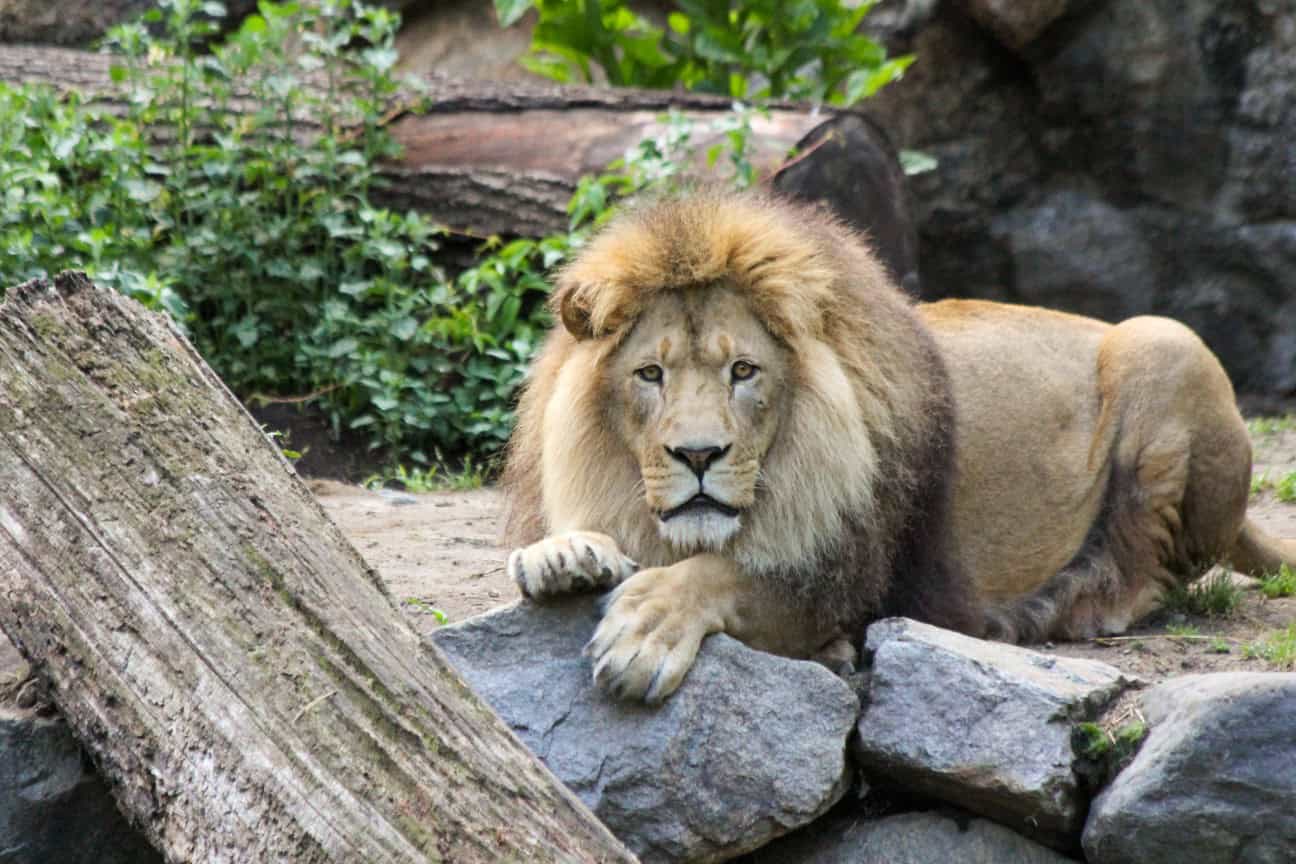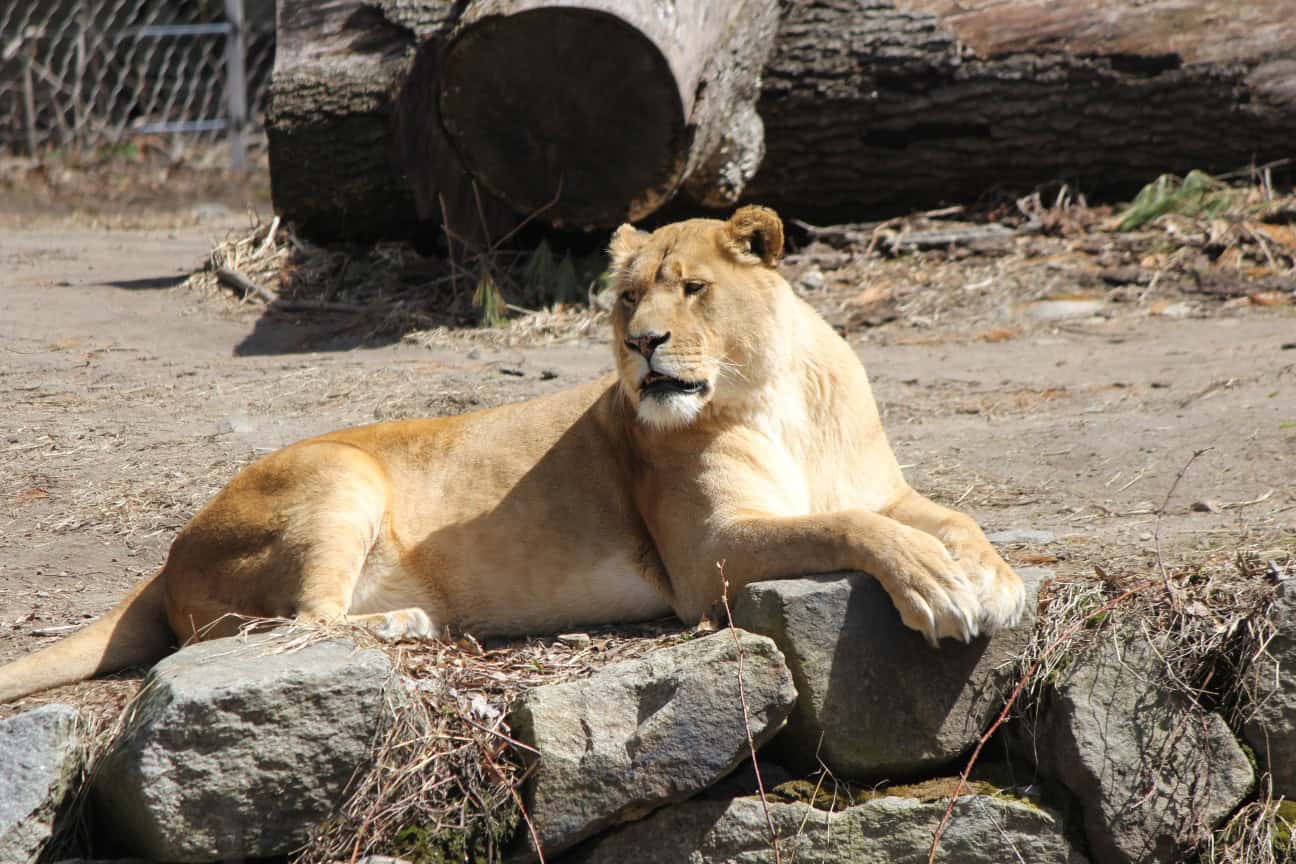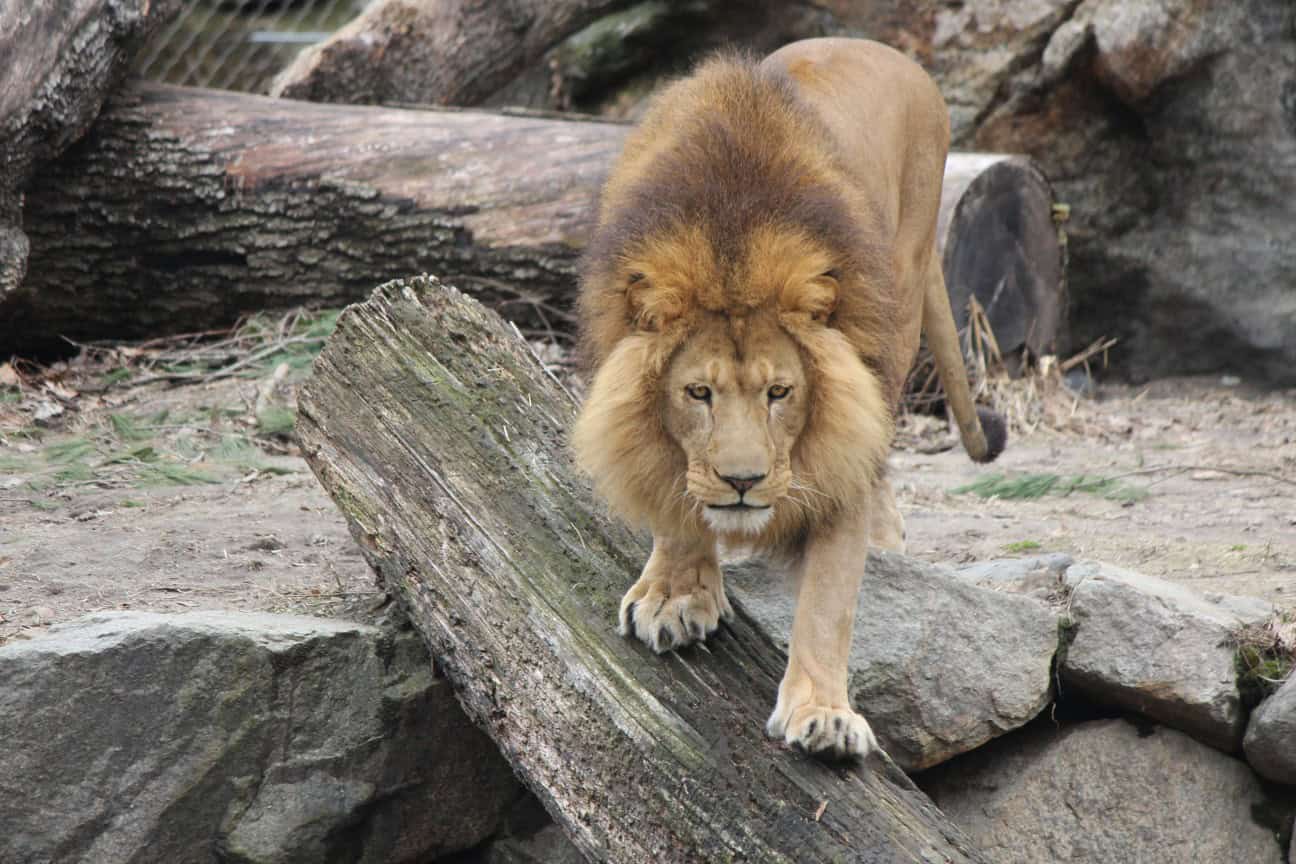African Lion
Panthera leo
Class: Mammalia Order: Carnivora Family: Felidae
Size
Weight (Males): 330-550 lbs
Weight (Females): 265-400 lbs
Diet
Lions are carnivores and hunt a wide range of prey. Lions are apex predators, so they are at the top of the African food chain.
Lifespan
Lifespan (Wild): up to 15 years
Lifespan (Captivity): up to 20 years
Habitat & Range
Grasslands and savannah of Sub-Saharan Africa
Interesting Facts
Lions are the most social cat species and live in groups called prides. Prides are primarily made up of related females and their young with only a few adult males. When a male becomes an adult, he will often leave to form his own pride. However, not all lions live in large social groups. Some are nomadic and live alone, and others live in pairs. Nomads may join a pride, and a lion in a pride may leave their group and become nomadic.
The females, called lionesses, in a pride generally do the majority of the hunting, and the males defend their pride’s territory. Female lions are faster and have better camouflage than the males. Lionesses work cooperatively in groups to take down large prey such as zebras and wildebeest. Lions will also sometimes steal prey from other predators like hyenas and wild dogs.
Male lions are easily distinguished from females due to their larger size and thick, shaggy manes. As cubs, lions have spots called rosettes that mostly fade once they reach adulthood.
A lion’s roar can be as loud as 114 decibels and may be heard up to 5 miles away.



At the Zoo
Southwick’s Zoo is home to two lions; a male named L.J. and his sister, Levanna. L.J. and Levanna were born at our zoo in 2012.
Conservation Status
Vulnerable
Threats
Lions are greatly threatened by loss of habitat, disease, and human encroachment. Much of their habitat has been lost to agriculture and commercial development.
